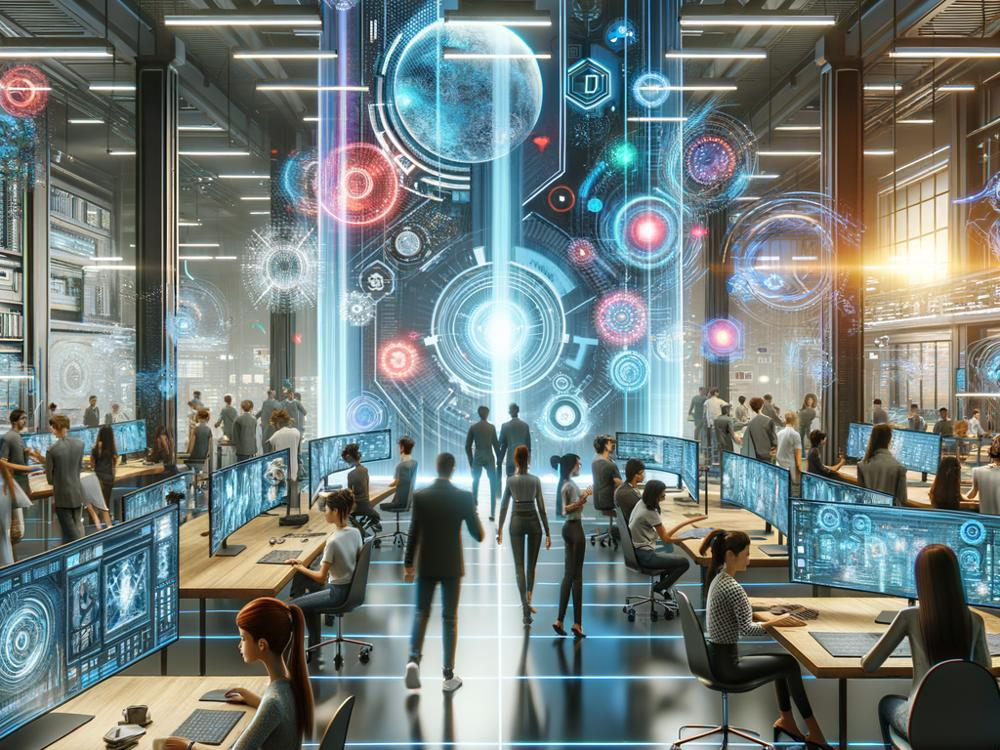Graphic Design in the Age of AI: What's Next?
In recent years, Artificial Intelligence (AI) has transformed many industries, and the world of graphic design is no exception. As AI continues to evolve, it's reshaping how designers work, creating both opportunities and challenges. This leaves many to wonder, "What's next for graphic design in the age of AI?" Let's explore this intriguing journey into the future of graphic design.
The Rise of AI in Graphic Design
AI has made its mark in graphic design through tools that can automate time-consuming tasks, suggest design adjustments, and even generate creative work from scratch. This evolution began with simple design software improvements and has now expanded to more complex AI-driven applications capable of understanding and executing specific design tasks. The impact? Designers can now produce work faster, experiment more freely, and explore new levels of creativity.
Opportunities Unleashed by AI
1. Enhanced Creativity and Efficiency: AI tools can handle tedious tasks, allowing designers to focus more on the creative aspects of their projects. Imagine having a virtual assistant who could sort through thousands of fonts or color schemes in seconds – that's what AI can do.
2. Personalization at Scale: With AI, creating designs that cater to specific audiences has become easier and more efficient. AI can analyze data to understand what visuals appeal to different demographics, enabling personalized marketing at a level never seen before.
3. Learning and Growth: AI-driven design platforms often come with learning algorithms that can suggest improvements and new techniques. This constant feedback loop is a goldmine for ongoing learning and skill development.
Challenges to Navigate
While the advancements in AI open new doors for graphic designers, they also present challenges that need careful consideration.
1. The Fear of Replacement: One of the biggest concerns is that AI might replace human designers. However, while AI can replicate certain tasks, the human ability to interpret complex emotions and cultural nuances in design remains unmatched. The future lies in collaboration rather than replacement.
2. Identity and Originality: With AI's capability to generate designs, there's a concern about maintaining originality. It becomes crucial for designers to use AI as a tool to enhance their unique voice rather than letting it dictate the creative direction.
3. Ethical Considerations: As AI tools become more sophisticated, questions about intellectual property and the ethical use of AI-generated graphics are rising. The industry must address these concerns to ensure fair use and recognition of AI-assisted work.
What's Next for Graphic Design?
The journey ahead is both exciting and uncertain, but a few predictions can be made.
1. Enhanced Collaboration: Future graphic design will likely focus more on human-AI collaboration. AI will become an indispensable partner, offering suggestions and executing tasks, while human creativity will steer the ship.
2. More Accessible Design: AI tools are making design more accessible to novices. This democratization of design can lead to more people engaging with and understanding the value of good design.
3. Empowering Creatives: Far from taking jobs, AI has the potential to eliminate the mundane aspects of design work, empowering creatives to tackle more complex and rewarding projects.
4. Continuous Evolution: The tools and technologies in graphic design will continue to evolve, pushing the boundaries of what's possible both in terms of creativity and efficiency.
In Conclusion
The age of AI in graphic design heralds a time of transformative change. While challenges exist, the opportunities for enhanced creativity, efficiency, and innovation are immense. By embracing these changes and learning to adapt, designers can explore new horizons of creativity unhindered by the limitations of the past.
As we look to the future, it's clear that AI will not replace human designers but will become an invaluable ally in the creative process. The next chapter in graphic design is not about choosing between human creativity and AI but about how these forces can merge to push the boundaries of what's possible in design. The future of graphic design in the age of AI is bright, filled with endless possibilities and opportunities for those ready to embark on this exciting journey.

